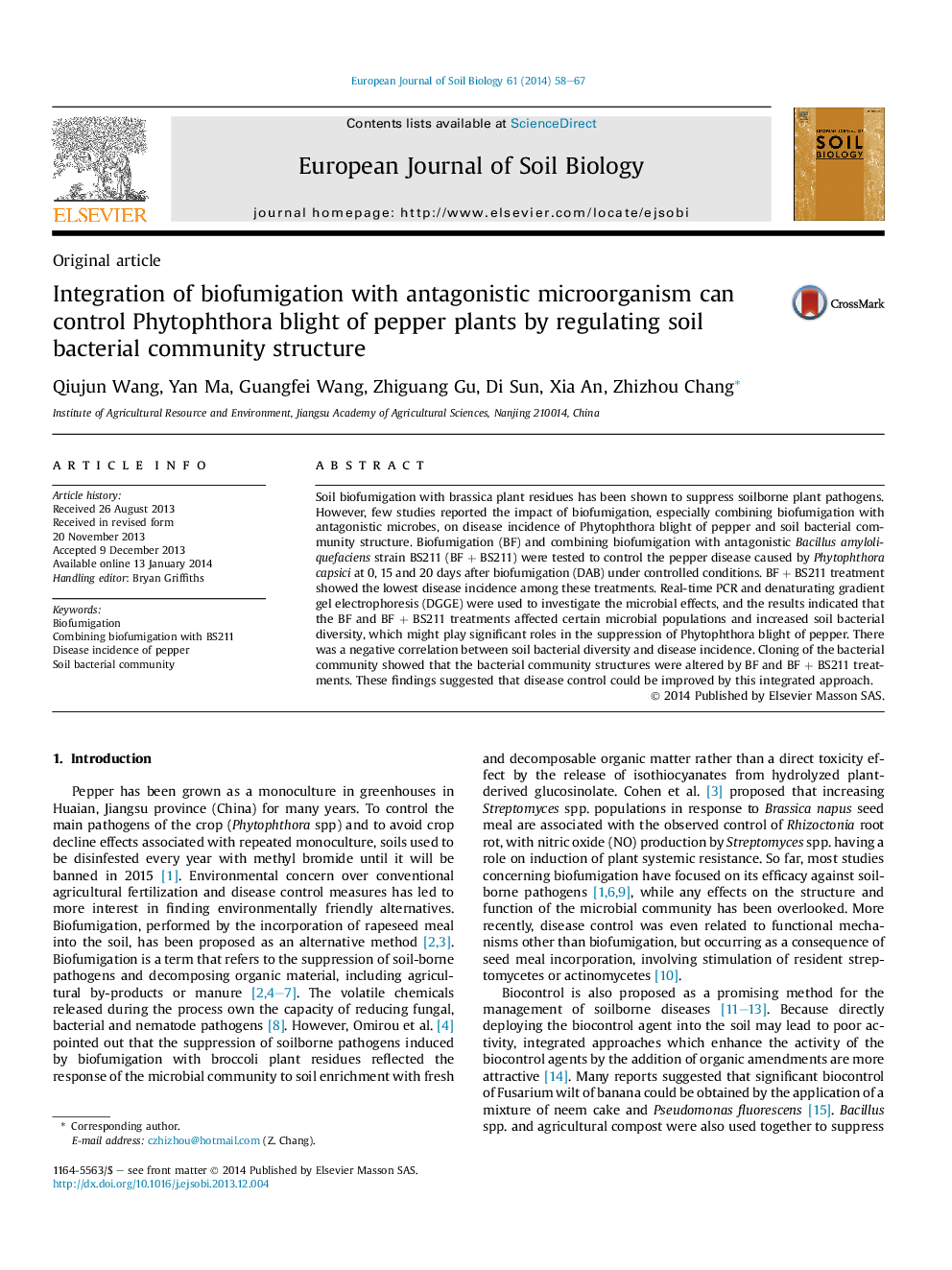| Article ID | Journal | Published Year | Pages | File Type |
|---|---|---|---|---|
| 4391883 | European Journal of Soil Biology | 2014 | 10 Pages |
•Integration of biofumigation with antagonistic microorganism is effective in control the pepper disease caused by P.capsici.•Soil bacterial community structure were significantly affected by integrated approach.•The control of pepper disease induced by integrated approach is mainly linked to the increase of soil bacterial diversity.
Soil biofumigation with brassica plant residues has been shown to suppress soilborne plant pathogens. However, few studies reported the impact of biofumigation, especially combining biofumigation with antagonistic microbes, on disease incidence of Phytophthora blight of pepper and soil bacterial community structure. Biofumigation (BF) and combining biofumigation with antagonistic Bacillus amyloliquefaciens strain BS211 (BF + BS211) were tested to control the pepper disease caused by Phytophthora capsici at 0, 15 and 20 days after biofumigation (DAB) under controlled conditions. BF + BS211 treatment showed the lowest disease incidence among these treatments. Real-time PCR and denaturating gradient gel electrophoresis (DGGE) were used to investigate the microbial effects, and the results indicated that the BF and BF + BS211 treatments affected certain microbial populations and increased soil bacterial diversity, which might play significant roles in the suppression of Phytophthora blight of pepper. There was a negative correlation between soil bacterial diversity and disease incidence. Cloning of the bacterial community showed that the bacterial community structures were altered by BF and BF + BS211 treatments. These findings suggested that disease control could be improved by this integrated approach.
